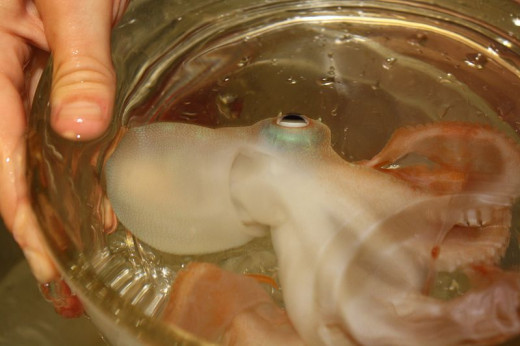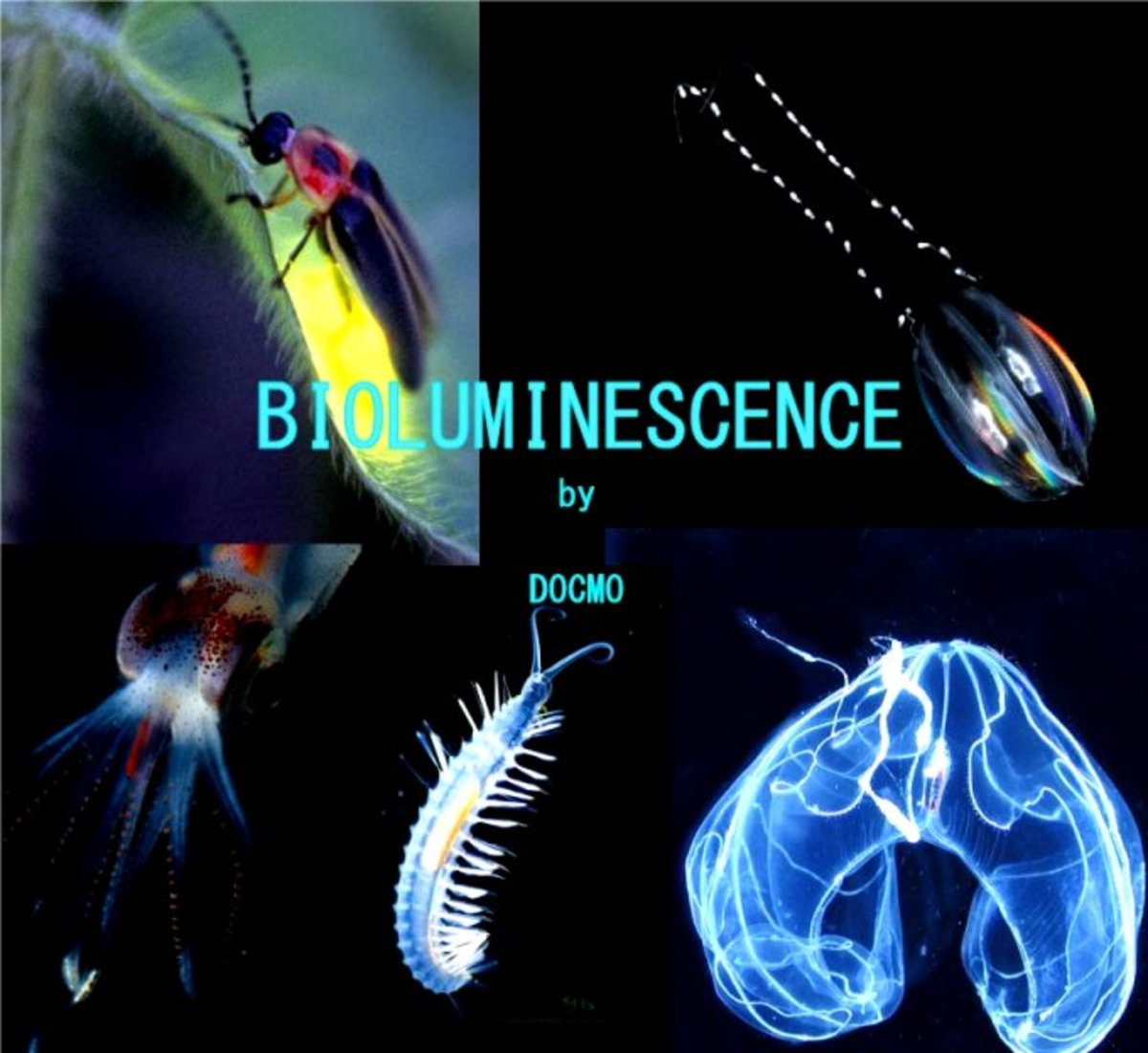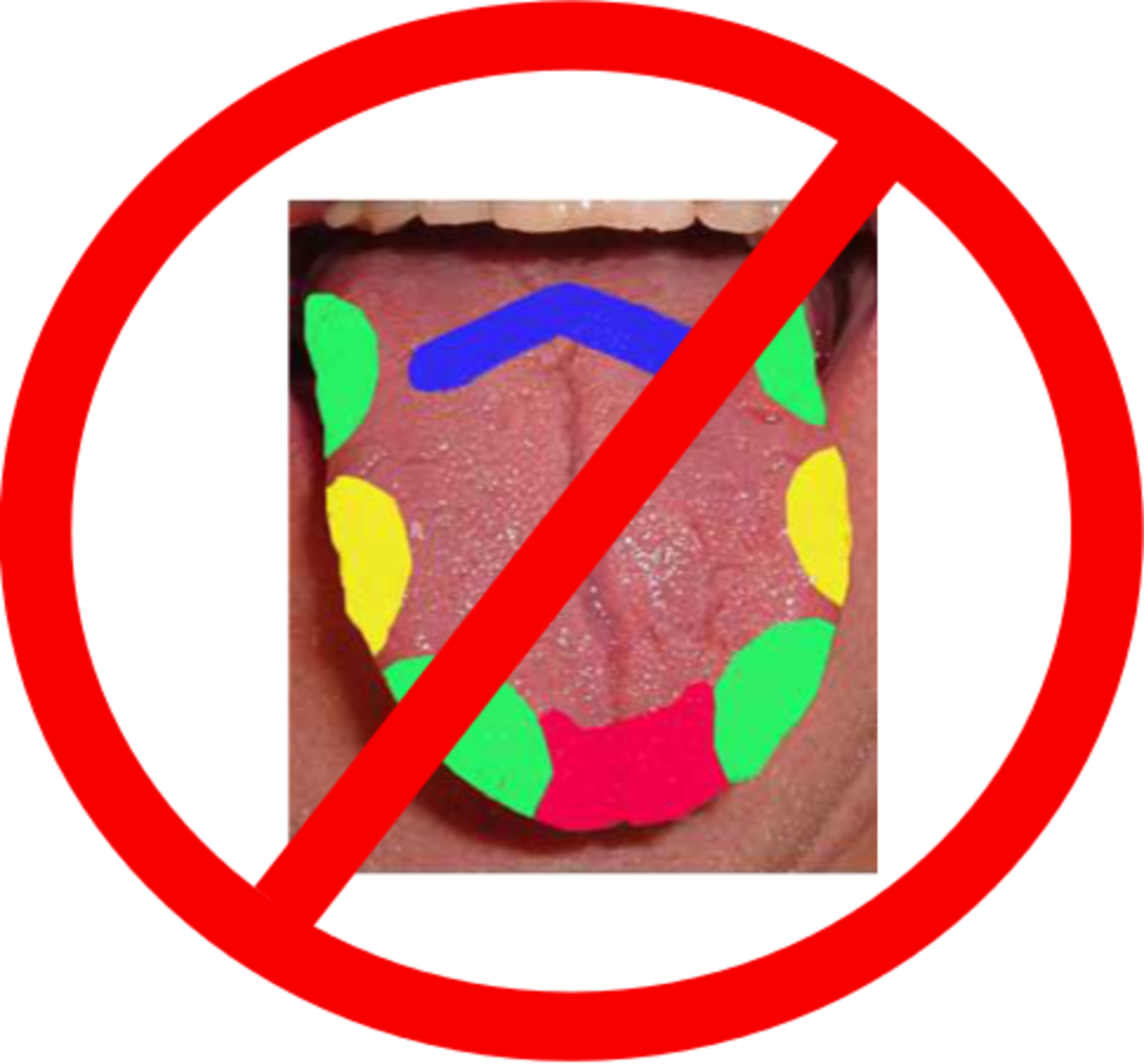How the Sense of the Eyes Work in Living Organisms
Compound Eyes of a Dragonfly

The Sighting
The sense of sight is possessed by most animals. Some simple, singled-celled (or unicellular) organisms have cells which are sensitive to light, but cannot be said to "See" in the way humans understand it. They have eye-spots which contain pigments known as carotenoids, and these are sensitive to light. They cause the cell or organism to move in a particular way in response to light. Other invertebrate animals have more complicated eyes, ranging from a fairly simple type ocellis to a more advanced kind known as a compound eye.
Compound eyes are a feature of several Arthropod invertebrates such as spiders, insects, beetles etc, and give very good vision especially in some insects like the dragonflies and flies for example. Squids and octopuses, which are molluscs, have eyes that are similar to those of vertebrate animals and have very good powers of vision.
Wide-Eyed Octopus

Continued-
The eyes of vertebrates are almost spherical balls filled with fluid, and contained within bony sockets in the skull. Light enters the eye through the transparent cornea and is refracted (or bent) as it passes through a small space filled with a fluid, the aqueous humor.
The light passes through the pupil which is a hole in the center of the colored iris. The light rays pass through the lens and on through a larger cavity filled with fluid called the vitreous humor. The lens bend the light rays and focuses them so that they form an image on the layer at the back of the eye which is called the retina.The retina contains the actual light receptors which are known as photoreceptors. These are pigment-containing cells of two types and are called rods and cones.
The pigments undergo chemical charges, in other words, "bleaching", in light of different wavelengths and this generates electrical impulses which travel to the brain along a special sensory optic nerve. Cones contain pigments which allow for colors to be detected and there are about six million in a human retina. Rods are sensitive in very dim light and allow for night vision but it does not detect color.
The retina in humans contain around 120 million of these. Several mammals are nocturnal and have weak color vision, but keen night sight is allowed for by the huge number of rods that are present.








